#space and geography
Text
“The opening episode of the Morte suggests a template for the management of castle space in the service of wielding political power. Both the actions in and around castles and the resultant reactions tell us how space can be used as a symbol of power – and also how to defy and even reject that power. As is common, Malory distills his source material to create a more compact version of the story of Arthur’s conception. In doing so, he trims a series of hosted parties at Uther’s castle – parties that include some detailed description of gift-giving as a cover for and an integral part of his courting of Ygerne – to a single event.
Indeed, in just a few lines, Malory’s Uther has fallen deeply in love. Igrayne’s discomfort in the face of Uther’s ‘grete chere oute of mesure’ (1.12–13) and the illicit love it betrays leads her to recommend an early and surreptitious exit: ‘Wherefor, husband, I conceille yow that we departe from hens sodenly, that we maye ryde all nyghte unto oure own castell’ (1.16–18). This rare instance of Malory’s Igrayne voicing her opinion and exhibiting agency convinces her husband, the Duke of Cornwall to depart.
This act disrupts the implicit rules of the king’s space. Uther’s political power seems to depend on specific spatial control. Having extended the invitation to Cornwall and his wife, it is expected that they will come and that they will stay through any planned celebration or gathering. Leaving without warning under cover of night – though, from our perspective, a reasonable attempt to protect Igrayne’s bodily integrity – undercuts royal power, a point made evident by Uther’s immediate response. Uther is twice ‘wonderly wroth(e)’ (1.22, 2.3), first at the news of their hasty exit and then upon their declining his second invitation.”
– Molly A. Martin, Castles and Space in Malory's Morte D'Arthur
8 notes
·
View notes
Text
Add your general area in the tags if you want to!
–
We ask your questions so you don’t have to! Submit your questions to have them posted anonymously as polls.
#polls#incognito polls#anonymous#tumblr polls#tumblr users#questions#polls about lgbtq stuff#submitted dec 13#polls about geography#lgbtq#lgbtq community#queer spaces#queer community
347 notes
·
View notes
Text
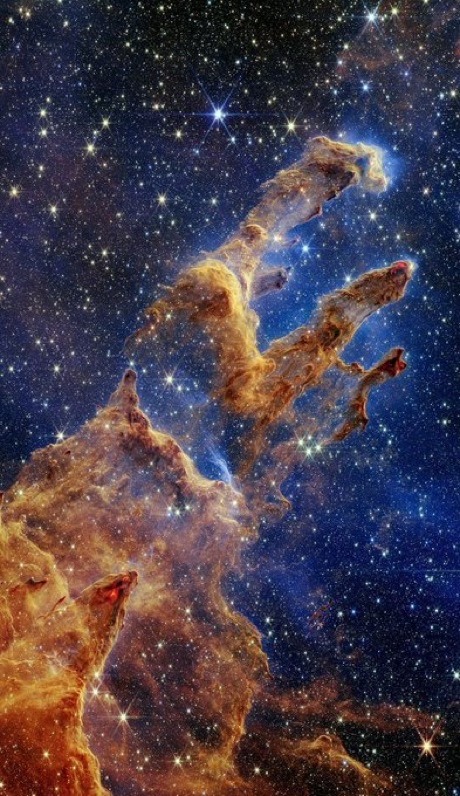

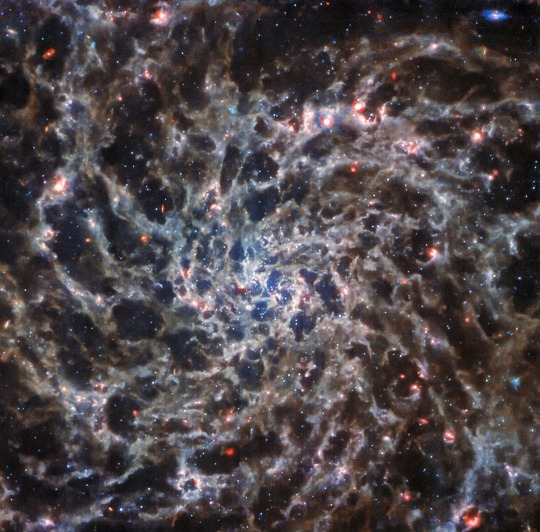

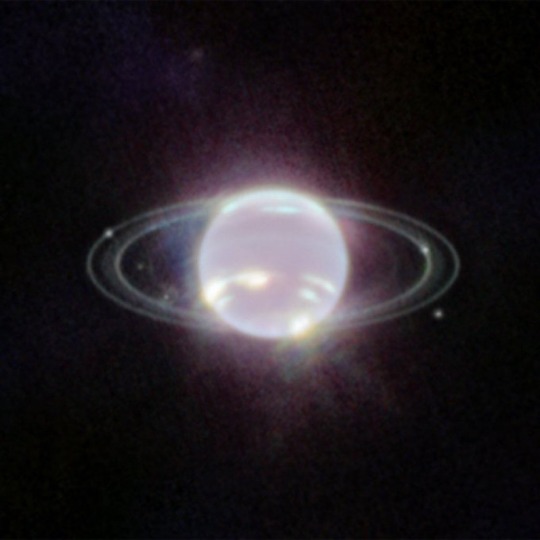

james webb telescope my beloved
#galaxies and geography#james webb telescope#space#nada#planets#outer space#space photography#galaxy#galaxies
947 notes
·
View notes
Text


About today ✨☀️
#study vibes#studyblr#geography#study#desk#motivation#uni#mine#study setup#studying#study aesthetic#study space#geo#desk aesthetic#wallpaper aesthetic#photography aesthetic#interior aesthetic#student life#study motivation#note taking#study inspo
56 notes
·
View notes
Photo
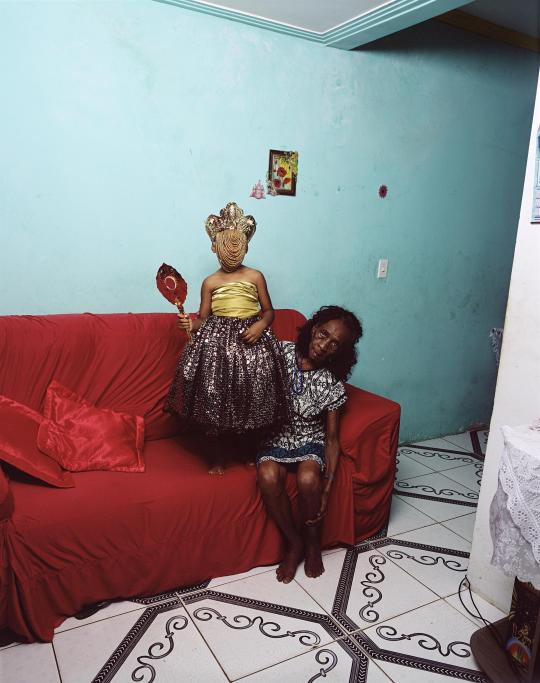
Deana Lawson, An Ode to Yemaya
#Deana Lawson#visual art: when Black artists create#color theory#texture: a feeling#light and such#beholding Black intimate geographies#we bow our heads in worship#theory of bodies in space#and against the haze of the afternoon the softest light
506 notes
·
View notes
Text

Rafał Olbiński
#Rafał Olbiński#art#surreal#space#cosmos#universe#stars#galaxy#trippy#lighthouse#dna#double helix#planets#comet#surrealism#surreal art#map#geography
124 notes
·
View notes
Text
getting irritated when people use the word liminal incorrectly not because I’m precious about dictionary definitions but because people only really seem to use it as a synonym for off-putting or unsettling and I think that severely restricts discussions about the spatial aspects of horror
#I think it also de-politicises the horror of place#offices spaces are not liminal! That’s not why they’re unsettling to look at!#geography
74 notes
·
View notes
Text
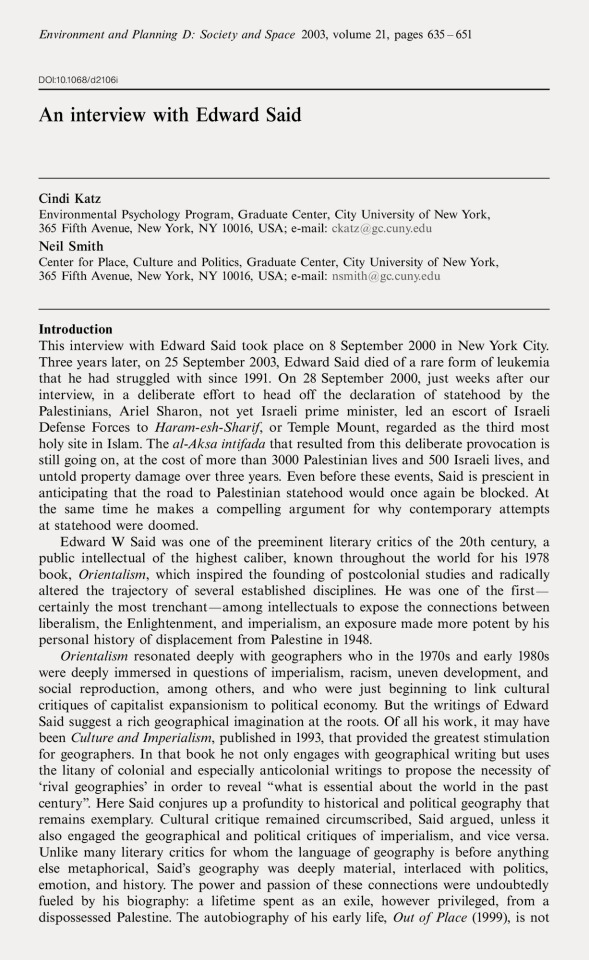
Cindi Katz – Neil Smith, An interview with Edward Said [New York City, September 8, 2000], «Environment and Planning D: Society and Space» 2003, Volume 21, Issue 6, pp. 635-651 (pdf here)

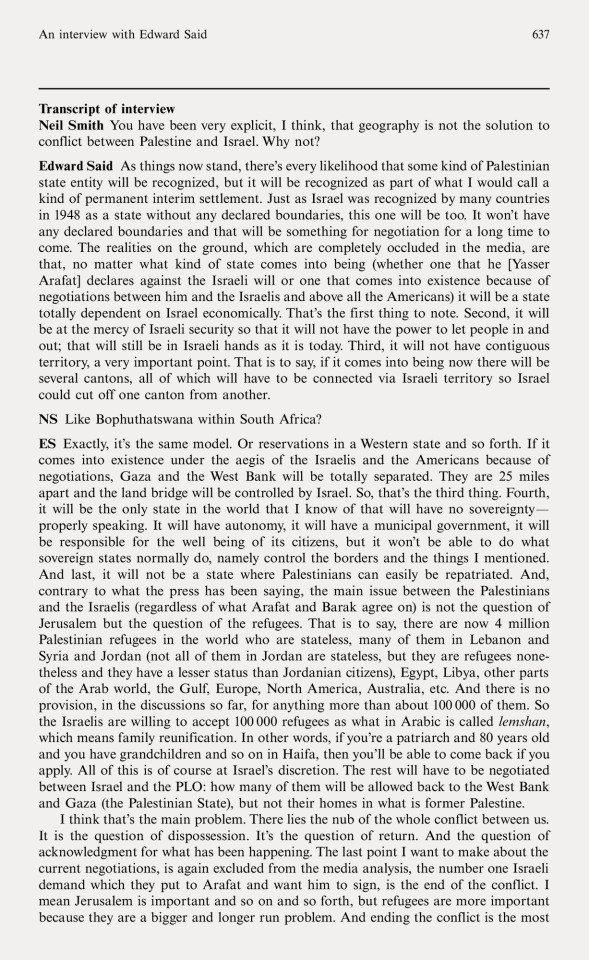
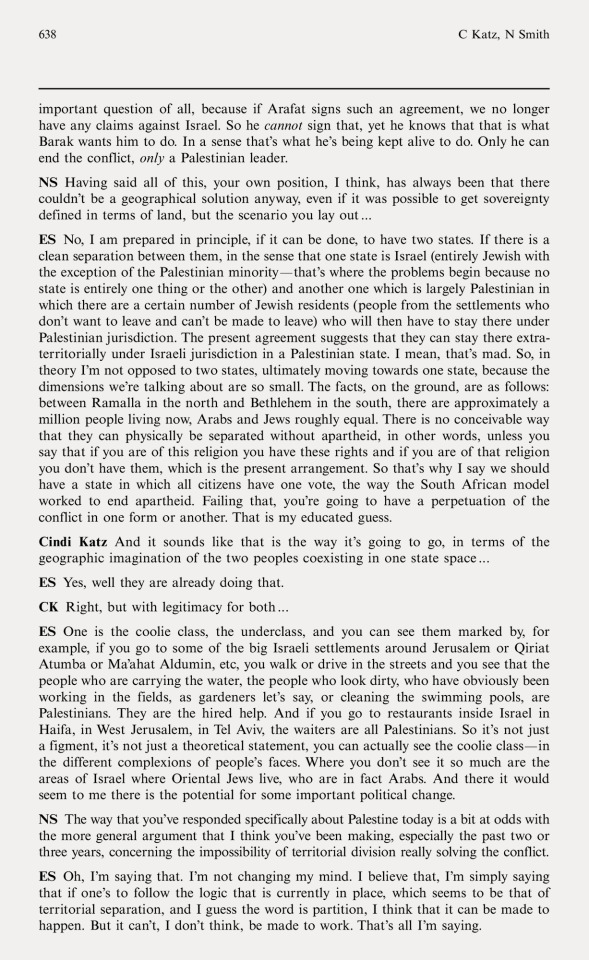
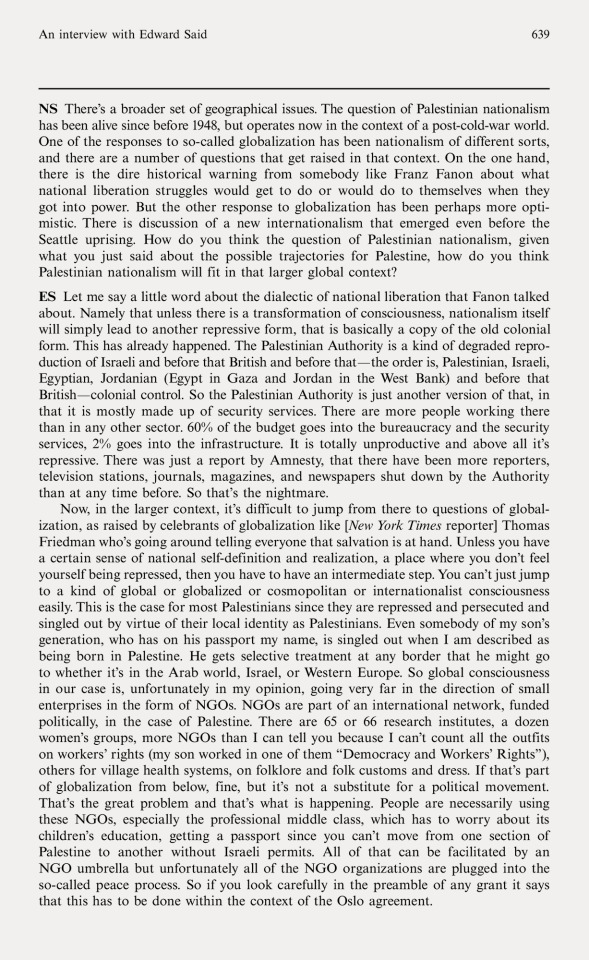
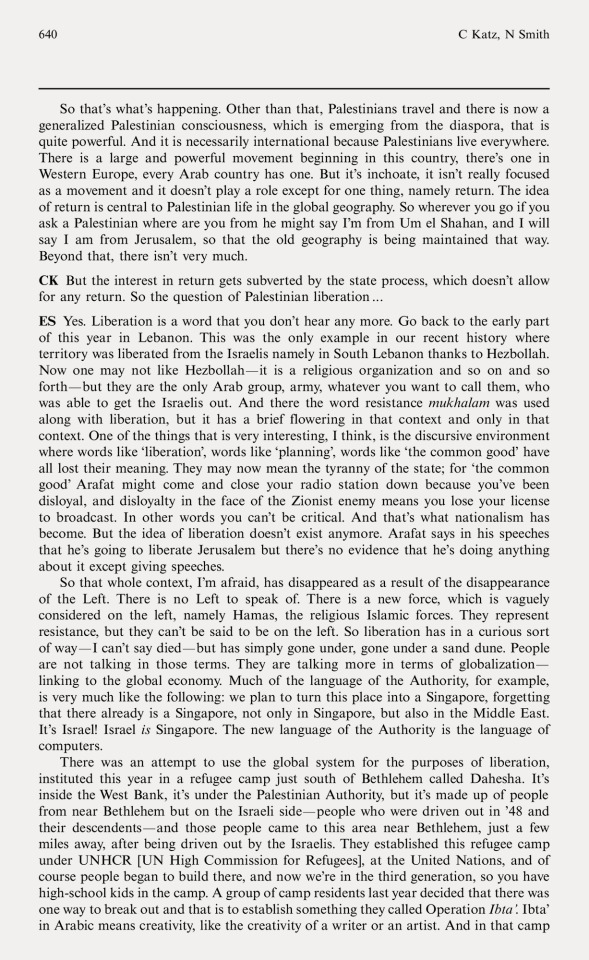
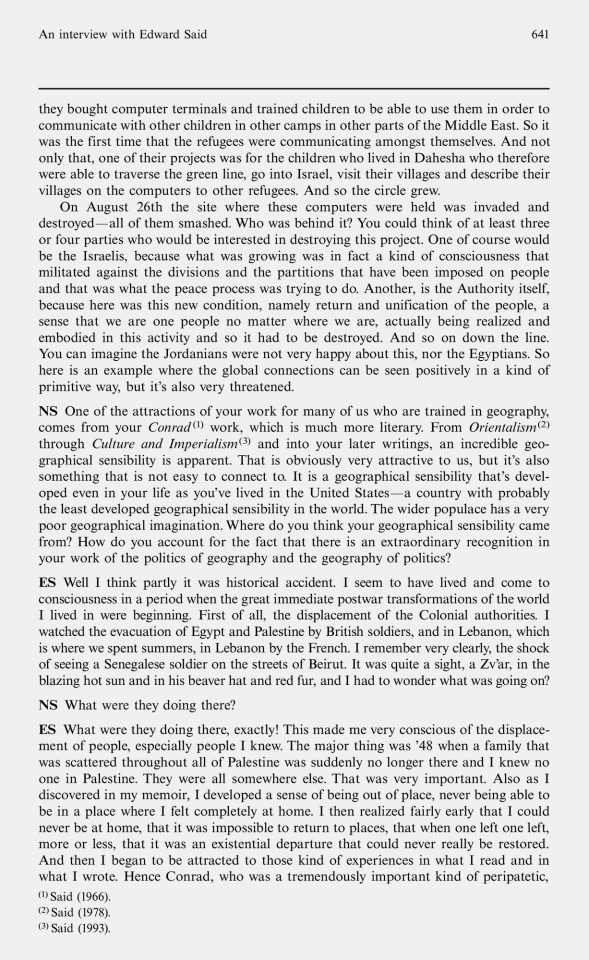
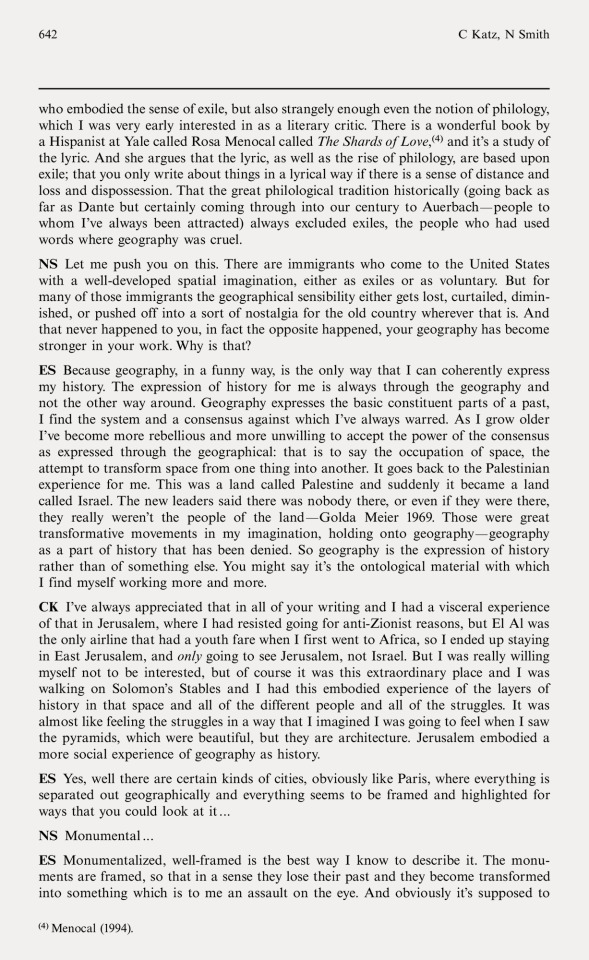

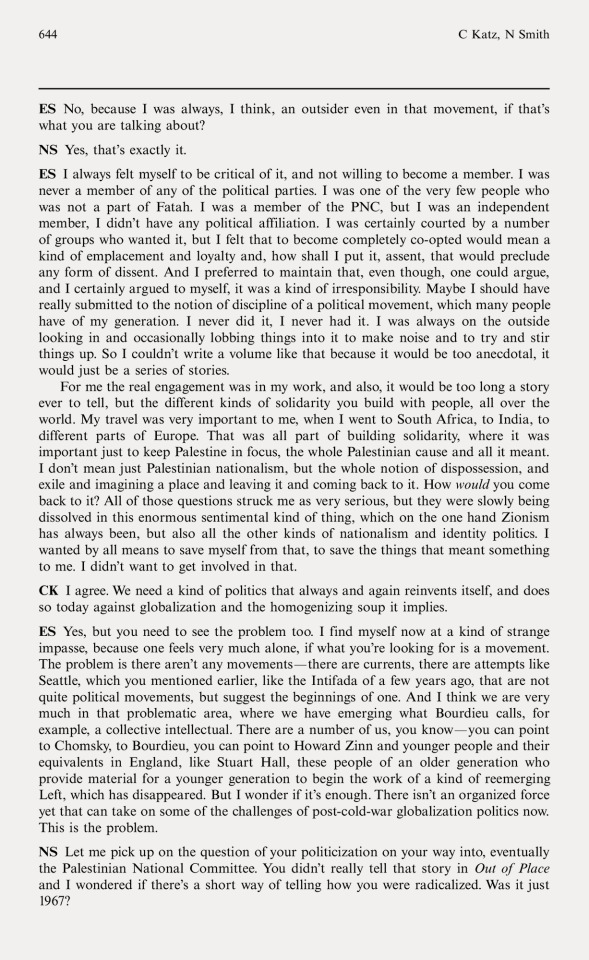
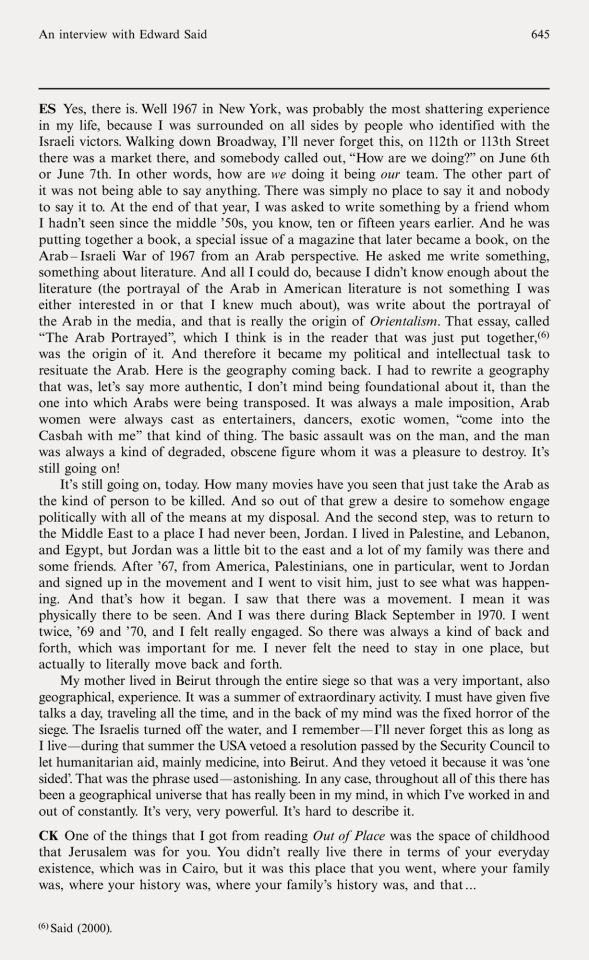
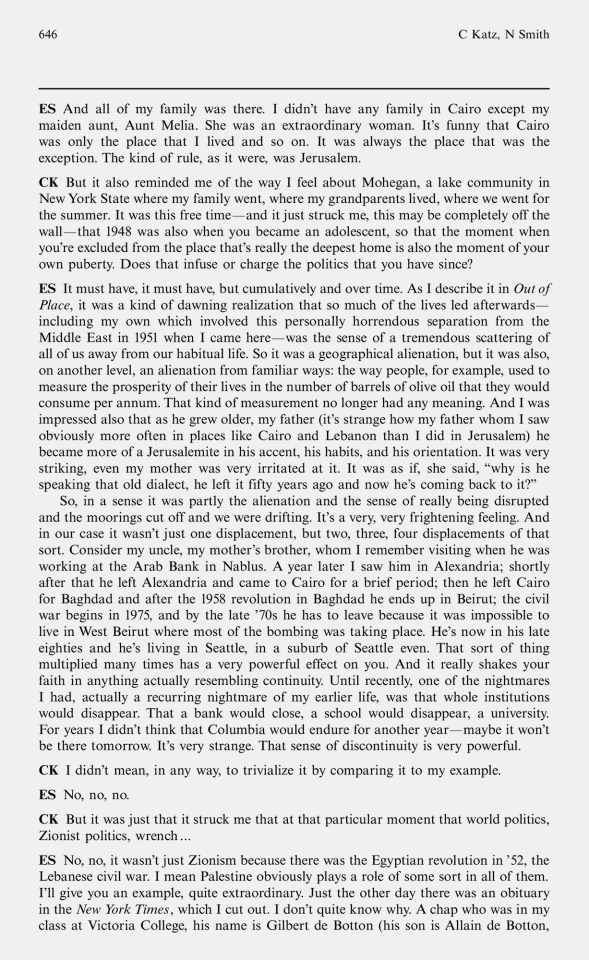
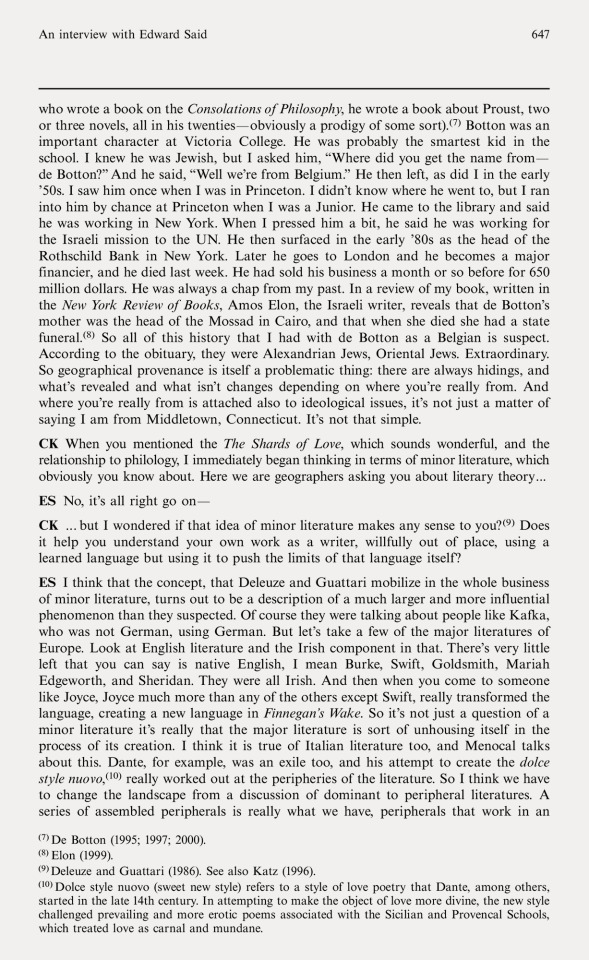
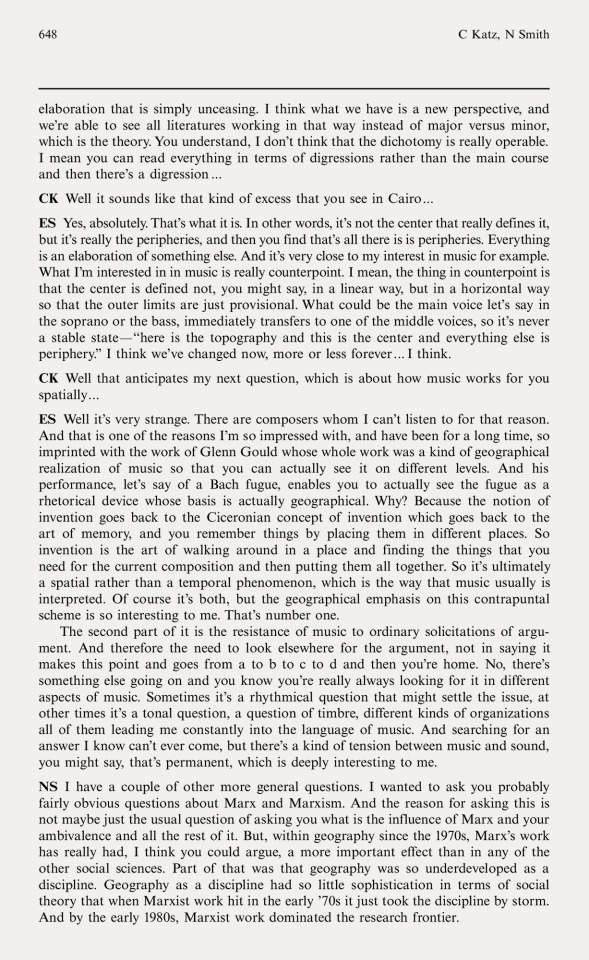
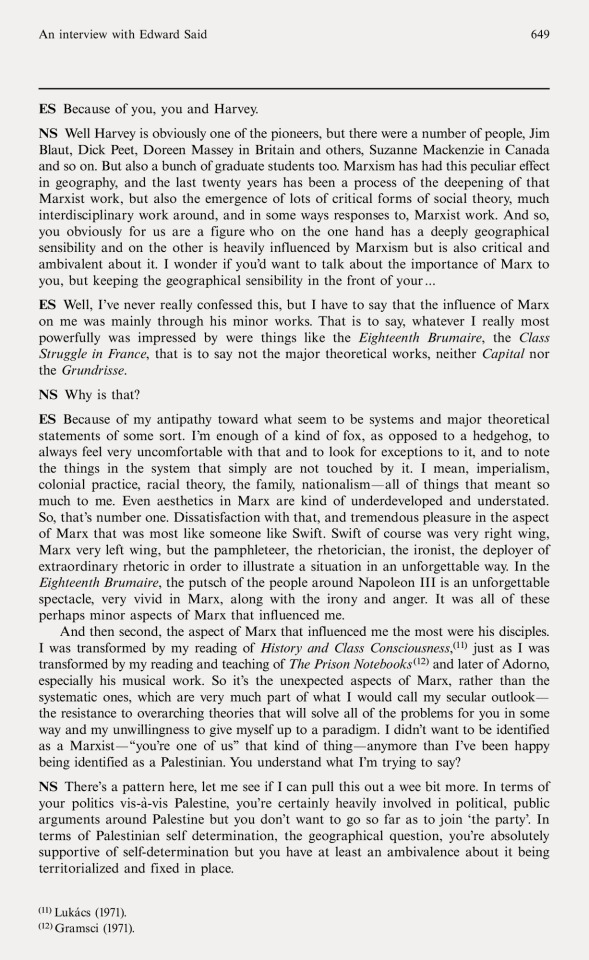

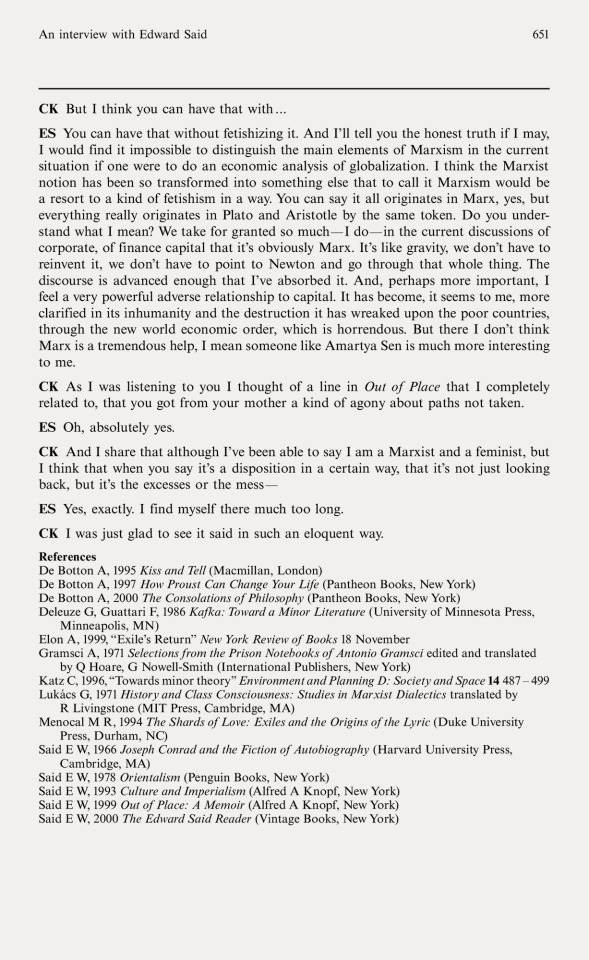
«[…] geography, in a funny way, is the only way that I can coherently express my history. The expression of history for me is always through the geography and not the other way around. Geography expresses the basic constituent parts of a past, I find the system and a consensus against which I've always warred. As I grow older I've become more rebellious and more unwilling to accept the power of the consensus as expressed through the geographical: that is to say the occupation of space, the attempt to transform space from one thing into another. It goes back to the Palestinian experience for me. This was a land called Palestine and suddenly it became a land called Israel. The new leaders said there was nobody there, or even if they were there, they really weren't the people of the landöGolda Meier 1969. Those were great transformative movements in my imagination, holding onto geographyögeography as a part of history that has been denied. So geography is the expression of history rather than of something else. You might say it's the ontological material with which I find myself working more and more.» – (p. 642)
#graphic design#geography#sociology#ecology#journal#edward said#edward w. said#cindi katz#neil smith#environment and planning d society and space#society and space#2000s
39 notes
·
View notes
Note
something im curious about when it comes to hollow knight is what their planet is like- i was a space kid growing up see- do they have a sun? if so how big and how far? how big is the planet itself- or is the hollow knight world not bound by normal planetary rules and are the planes neverending- which brings the question
is the hollow knight planet flat?
Hshchs anon I am flattered that you think I know the answer to this, but I'm an evolutionary geneticist who basically cheated his way through his physics requirements and has only the most basic understanding of how planets work so I have No Fucking Clue how to answer this question. Zero idea. Only thing I can say for certain is that their planet wouldn't be flat and that's because I'm pretty sure flat planets don't exist (and I love merging science and magic so a magically flat planet doesn't appeal to me)
@actingwithportals help you're the space guy, got any thoughts on this?
#sorry anon but you asked the WRONG guy about space shit#anon#reply#hollow knight#i dont even think too hard about their geography sjchdjs thats not my thing#im just an evo biologist who loves ethology man
110 notes
·
View notes
Text
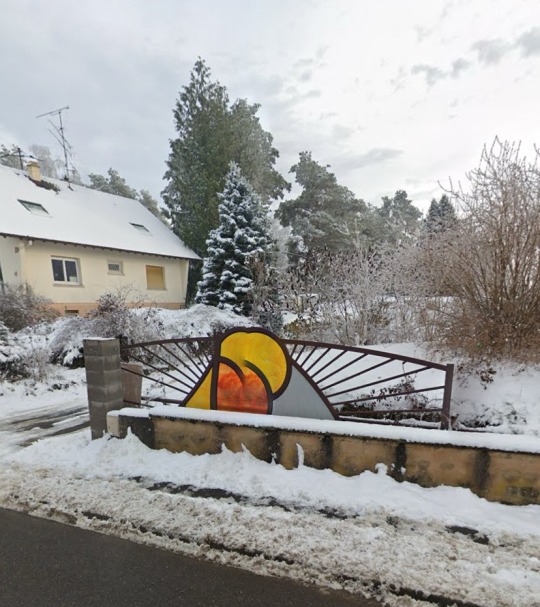

selenthal / In Singrist, France
I think I probably belong in one of these German sounding tiny French towns
#photography#visual archive#design#art#mine#liminal#aesthetic#places#france#google maps#geoguessr#geography#weirdcore#webcore#liminal spaces#screenshot#europe#landscape#surreal
11 notes
·
View notes
Text
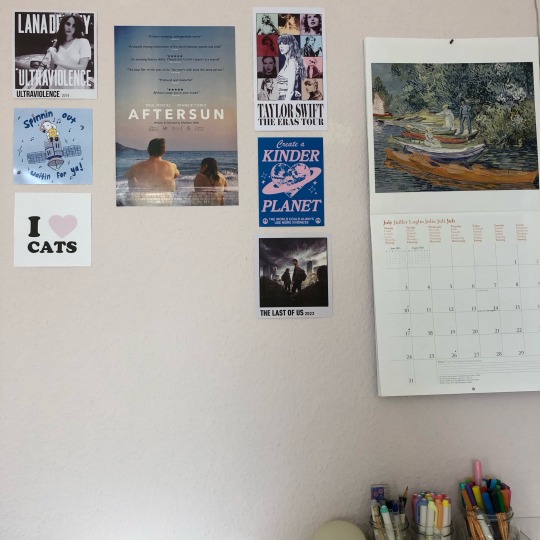

desk space + working on my assignment
#mar studies#my post#geography student#geography#study aesthetic#study inspiration#studying#study space#study vibes#study blog#study motivation
54 notes
·
View notes
Text
While concerns of geography, place, and conquest/control are prominent in much medieval romance literature—particularly Arthurian romance—Malory’s text is unique among accounts of King Arthur for the way in which it imagines the map of Arthur’s world, an imagining that is best understood when viewed in light of some of the specific concerns of fifteenth-century England.
Engaging the Morte Darthur from the perspective of Cornwall helps throw into sharp relief the contours of the unique problems inherent in the late medieval British relationship between regionalism and nationalism. Using Cornwall in Malory as a kind of pivot point, we can apprehend this relationship between the whole and the part, but we cannot resolve it. Indeed, close analysis reveals that it can never be resolved, and herein lies the significance. the stubborn refusal of Cornwall to be categorized—and our attention to this refusal—helps us better see the Morte Darthur as a text that produces difference and presents challenges so that its characters have a means of defining themselves. Cornwall helps make plain the necessity of always striving toward resolution, toward incorporation, but never achieving it. The endless deferral is essential to Malory’s narrative.
[...]
It is a commonplace to note that the world in which Malory lived was one full of territorial concerns and the mourning of geographic losses. At the time when Malory was writing his text, the Angevin empire had long been whittled away. all English continental holdings—save Calais—were gone, and England itself was fractured in multiple ways. although both Malory and his first printer, Caxton, refer many times to “all ye englishmen,” their contemporaries were much more likely to identify themselves first in terms of their local affinities rather than their national ones. This does not preclude national sentiment, but it does mean we must pay as much attention to local identities as to national.
Such a self-identification becomes all the more interesting when we consider that many of those living in Cornwall in Malory’s day most likely spoke Cornish as a first language, although many certainly also spoke english. Thorlac Turville-Petre argues that “defining the nation in terms of territory or race presents considerable complications. By far the most satisfactory form of self-definition is in terms of language, wherever this can be achieved.” By this definition, Cornwall would seem to be an entity distinctly separate from England. the position of this region within Malory’s text becomes even more interesting when we consider that Benedict Anderson has famously and contentiously suggested that it is the explosion of print culture that helps give rise to the nation—an “imagined community”—through the fixing and dissemination of texts in vernacular languages.
[...]
Cornwall is contradictorily both part of england and distinct from it, as Patricia Clare Ingham’s astute comment on the opening lines of the Morte Darthur makes clear: “either the ‘all’ of england Uther rules does not include Cornwall, or Uther remains only titular ruler there, his power compromised by the duke’s rebellion” (see figure 1.1). Cornwall is the source of Malory’s Arthurian community at the level of narrative—Arthur is born here to a Cornish mother—and Cornwall is the Morte Darthur’s center in terms of structure—the middle third of Malory’s text is based on the old french Prose Tristan. in the final conflict between Arthur and Launcelot, the knights of Cornwall side with Launcelot: “then there felle to them, what of north walys and of Cornwayle, for sir lamorakes sake and for sir trystrames sake, to the number of a seven score knyghtes” (1170.26–29). and it is from Cornwall that Arthur’s heir comes, as we are told in the closing lines of the Morte: “then syr Constantyn that was syr Cadores sone of Cornwayl was cho- sen kyng of englond, and he was a ful noble knight, and worshipfully he rulyd this royaume” (1259.27–29). again and again, Malory’s Morte Darthur returns to the realm of Cornwall, as if seeking to reconcile the identity of this geographic space with that of the arthurian community to which it gave birth, from which it remains estranged, and to which it is essential.
– Dorsey Armstrong, Mapping Malory's Morte: The (Physical) Place and (Narrative) Space of Cornwall
6 notes
·
View notes
Text

Stromatolites! | Estromatólitos!
🇬🇧
Stromatolites are fascinating geological structures that hold crucial information about the early history of life on Earth. These formations are layered structures created by the activity of microbial communities, primarily cyanobacteria, in shallow aquatic environments. These ancient photosynthetic microorganisms played a significant role in Earth's early atmosphere by releasing oxygen as a byproduct of photosynthesis. The ability of cyanobacteria to thrive in such environments, including hypersaline or hot spring environments, makes stromatolites important environmental indicators.
They form through the trapping, binding, and precipitation of minerals by the sticky biofilms produced by microbial mats. The layering results from the repeated growth of these microbial communities over time. They have an extensive geological history, with some of the oldest known examples dating back over 3.5 billion years. These ancient structures provide valuable insights into the conditions and types of life that existed on Earth during its early stages.
The study of stromatolites has implications beyond Earth. Examining these ancient structures helps scientists in their search for signs of past or present life on other planets, providing a potential template for what to look for in extraterrestrial environments. While stromatolites were more prevalent in ancient times, they still exist today in a few select locations worldwide. Shark Bay in Western Australia is famous for its living stromatolites, providing a unique opportunity to study these ancient life forms in a contemporary setting.
The study of stromatolites is crucial for understanding the evolution of life on Earth. The layered structures provide a record of the interactions between early microbial life and the changing environment, offering glimpses into the development of complex ecosystems. They are remarkable geological features that offer a glimpse into Earth's ancient past and the early forms of life that shaped our planet! Studying these structures contributes not only to our understanding of Earth's history but also to the broader field of astrobiology as we explore the potential for life beyond our planet.
🇧🇷
Estromatólitos são estruturas geológicas fascinantes que contêm informações cruciais sobre a história inicial da vida na Terra. Essas formações são estruturas em camadas criadas pela atividade de comunidades microbianas, principalmente cianobactérias, em ambientes aquáticos rasos. Esses microrganismos fotossintéticos antigos desempenharam um papel significativo na atmosfera inicial da Terra, liberando oxigênio como subproduto da fotossíntese. A capacidade das cianobactérias de prosperar em ambientes extremos, incluindo ambientes hipersalinos ou de água termal, torna os estromatolitos indicadores ambientais importantes.
Eles se formam pela captura, ligação e precipitação de minerais pelos biofilmes pegajosos produzidos por tapetes microbianos. A formação em camadas resulta do crescimento repetido dessas comunidades microbianas ao longo do tempo. Eles têm uma extensa história geológica, com alguns dos exemplos mais antigos datando de mais de 3,5 bilhões de anos. Essas estruturas antigas fornecem dados sobre as condições e os tipos de vida que existiam na Terra durante seus estágios iniciais.
O estudo dos estromatolitos tem implicações além da Terra. Examinar essas estruturas antigas ajuda os cientistas em sua busca por sinais de vida passada ou presente em outros planetas, fornecendo um modelo potencial do que procurar em ambientes extraterrestres. Embora os estromatolitos fossem mais prevalentes em tempos antigos, ainda existem hoje em poucos locais selecionados em todo o mundo. Shark Bay, na Austrália Ocidental, é famosa por seus estromatolitos vivos, proporcionando uma oportunidade única de estudar essas formas de vida antigas em um ambiente contemporâneo.
O estudo dos estromatolitos é crucial para entender a evolução da vida na Terra. As estruturas em camadas fornecem um registro das interações entre a vida microbiana inicial e o ambiente em mudança, oferecendo vislumbres do desenvolvimento de ecossistemas complexos. Eles são características geológicas notáveis que oferecem uma visão do passado antigo da Terra e das formas iniciais de vida que moldaram nosso planeta! O estudo dessas estruturas contribui não apenas para nossa compreensão da história da Terra, mas também para o campo mais amplo da astrobiologia, enquanto exploramos o potencial de vida além do nosso planeta.
#space#universe#paleobotany#paleontology#science#digital painting#stromatolite#earth#life#biology#geology#biodiversity#geography#geografia
11 notes
·
View notes
Text
22.04.2024
Today was no different then yesterday even i tried to reconcile with my family and failed miserably because there are more evil bastards and apparently they are called relatives. They don't hesitate a bit to insult you in front of your parents without knowing a single thing and it hurts 10times more when your parents choose to belive them and not you. I have stopped expecting any sort of understanding from them. They don't see your efforts and tries. They say most hurtful things and then quotes it with "We are only concern for you." Or "it is only for your good.". And even i can't turn to my siblings for help as they dont side with me. I have only one friend to rely on who is supporting me in this hard time. I am thankful to her. God bless her.
I hope this ends quickly. I can't take it anymore.
Things I did:
Human Geography: Textbook reading
Modern History: revising notes
English: prepared for test for tmr.
Song of the day: WESTSIDE by keshi
Good luck to me for tmr.
#study with me#studyblr#studyblr community#study motivation#study space#study aesthetic#study blog#study inspo#study stuff#student#study notes#writing notes#notes#student life#modern history#human geography#english literature#textbook#book reading#long reads#reading#revision
15 notes
·
View notes
Text
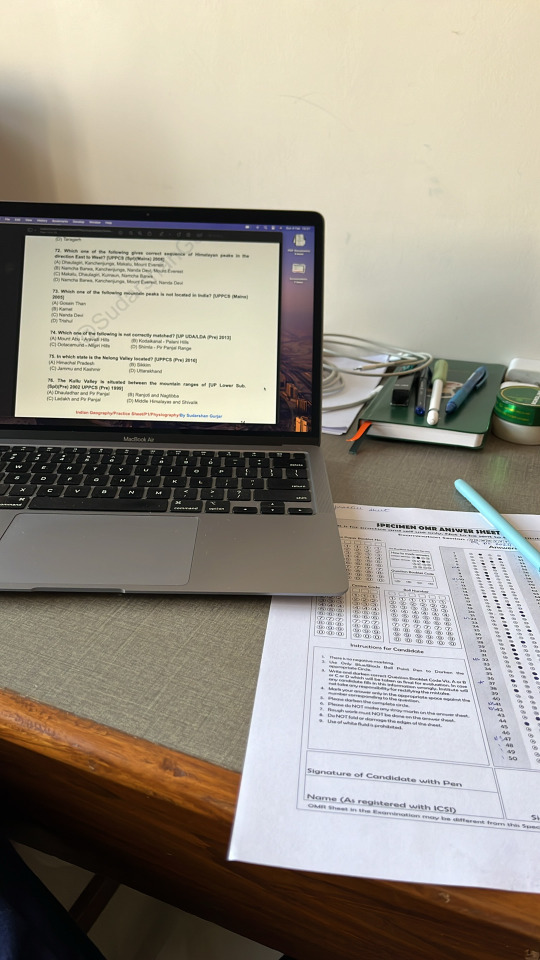
What my mornings look like these days
9 notes
·
View notes
Text



Ayo Edebiri by Walker Bunting
#Ayo Edebiri#Walker Bunting#visual art#color theory#light and such#texture: a feeling#theory of bodies in space#beholding Black intimate geographies#pouring liquidity and grace#and against the haze of the afternoon the softest light#there is only wonder in the softness of joy
40 notes
·
View notes